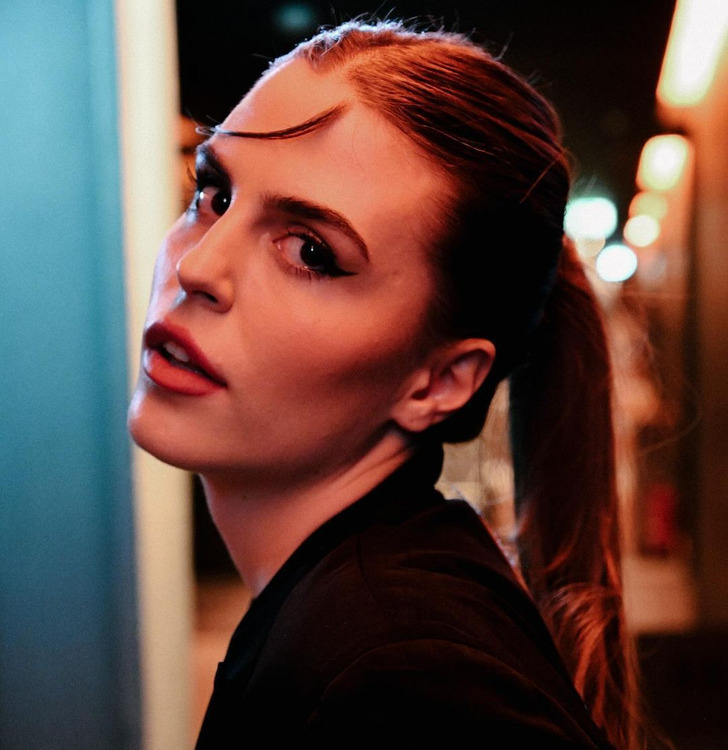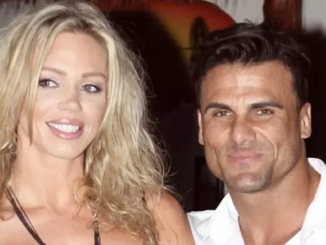In a world with defined beauty standards, it takes courage to embrace one’s uniqueness fully. Rada, a stunning model, exemplifies this courage as she proudly defends the distinctive patch of hair that grows from her forehead against online trolls and critics.
She went viral for her unique look

At just 18 years old, model Rada Prelevic, also known as Rada Viic on Instagram and TikTok, has captured the attention of social media users worldwide due to a distinctive feature: long strands of hair that gracefully hang from her forehead. Despite the fascination for her unique trait, Rada often finds herself subjected to harsh criticism and hurtful comments online. Trolls label her appearance as «bizarre» and suggest that she remove the locks.
In a candid video shared with her followers, she courageously affirmed that she really loves her hair and she won’t shave it. She also questions herself about why her unique hair bothers so many people.
She was born with it.

The Serbian-born model, now based in Oslo, Norway, where she has been living since the age of 5, shed light on the origins of her distinctive feature. Reflecting on her unusual trait, Rada explained that she was born with it. And there’s no explanation as to why the hair is placed on her forehead and has grown so much. She only knows that the patch is a birthmark.
The hate doesn’t bother her.

Rada’s confidence in her appearance is not only admirable but also inspiring. Despite the online hate, she remains firm in her conviction that her forehead birthmark is a beautiful and integral part of her identity. Her refusal to conform to societal pressures sends a powerful message of empowerment and self-acceptance to her followers and beyond.
The amount of support from Rada’s followers serves as a reminder that kindness and acceptance far exceed negativity. Hundreds of supportive messages flooded the comments section of her post, applauding her confidence and praising her unique beauty.
Her hair helps her modeling career.

For Rada, the unique lock of hair coming from her forehead has evolved into a unique feature, one that she proudly embraces as her personal «trademark» within the fashion industry. She notices that fashion magazines and photographers love her appearance, making her even prouder of the way she looks.
In matters of love and relationships, Rada’s self-assurance extends to her personal life as well. She says that she would never compromise her authenticity for the sake of romantic companionship. She firmly states that she would never be in a relationship with someone who doesn’t appreciate her for who she is.
Rada’s resolute self-confidence and refusal to conform to societal standards of beauty serve as a powerful reminder of the importance of embracing one’s individuality. In the face of relentless criticism and online hate, she remains firm in her self-acceptance, inspiring countless others to celebrate their unique traits and differences without fear or hesitation.
Preview photo credit rada.viic / TikTok, rada.viic / Instagram
MY FIVE KIDS COMPLETELY FORGOT ABOUT MY 93RD BIRTHDAY — I SPENT IT ALONE UNTIL THE DOORBELL RANG

The old house, usually echoing with the phantom sounds of laughter and the clatter of family dinners, was unnervingly silent. Arnold, his 93 years etched into the lines of his face, sat in his favorite armchair, the fading afternoon light casting long shadows across the room. He had meticulously prepared for this day, his birthday, a milestone he had hoped to share with the five children he and his beloved wife had raised.
He had sent out invitations, not just any invitations, but handwritten letters, each one filled with the warmth of his love and the anticipation of their reunion. He longed to see their faces, to hear their voices, not through the cold, impersonal medium of a phone call, but in person, with hugs and shared stories.
The morning had begun with a flutter of excitement, each distant car sound a potential herald of their arrival. He had set the dining table, five empty chairs waiting patiently, each one a silent testament to the love he held for his children. But as the hours ticked by, the excitement waned, replaced by a gnawing sense of disappointment.
He tried calling, his fingers trembling as he dialed each number. Voicemail after voicemail, each unanswered call a tiny pinprick to his heart. It dawned on him, with a chilling clarity, that he would be spending this special day alone, a solitary figure in a house filled with memories.
He stared at the empty chairs, his mind drifting back to the days when they were filled with the boisterous energy of his children, their laughter echoing through the house, their faces alight with joy. He remembered birthdays past, filled with homemade cakes and silly games, with hugs and kisses and whispered “I love yous.”
The silence in the house grew heavier, pressing down on him like a physical weight. He felt a pang of loneliness, a deep ache in his heart. He had always been a man of resilience, a man who found joy in the simple things. But today, the silence was deafening, the loneliness unbearable.
He rose from his armchair, his movements slow and deliberate, and walked to the window. The sun was setting, casting a warm, golden glow across the garden. He watched as the shadows lengthened, stretching across the lawn like long, reaching fingers.
Just as he was about to turn away, a sound pierced the silence. The doorbell rang, a sharp, insistent chime that startled him. He hesitated, his heart pounding in his chest. Could it be?
He walked to the door, his footsteps echoing in the empty hallway. He opened the door, and his breath caught in his throat.
Standing on the porch were not his five children, but a group of young people, their faces filled with warmth and kindness. They were his neighbors, the ones he had waved to over the years, the ones he had shared a kind word with.
“Mr. Arnold,” a young woman said, her voice gentle, “we heard it was your birthday. We wanted to wish you a happy birthday.”
Behind her, a young man held a large cake, its candles flickering in the evening breeze. Others held balloons and small gifts.
Arnold’s eyes filled with tears. He was overwhelmed, touched by their unexpected gesture of kindness. He had been so focused on his children, on the family he had created, that he had overlooked the community around him, the people who cared.
They came inside, filling the house with laughter and chatter. They sang “Happy Birthday,” their voices a chorus of warmth and affection. They shared stories and memories, their presence a comforting balm to his loneliness.
As the evening wore on, Arnold felt a sense of peace settling over him. He realized that family wasn’t just about blood, it was about connection, about shared experiences, about the kindness of strangers.
He looked at the young people around him, their faces glowing in the candlelight, and he knew that he wasn’t alone. He had a community, a network of support, a family of friends.
He blew out the candles on his cake, a small smile playing on his lips. He had spent his 93rd birthday alone, but he hadn’t spent it lonely. He had learned a valuable lesson that day: that even in the face of disappointment, there is always kindness, there is always connection, there is always hope. And that, he realized, was a gift more precious than any he could have received from his children.



Leave a Reply